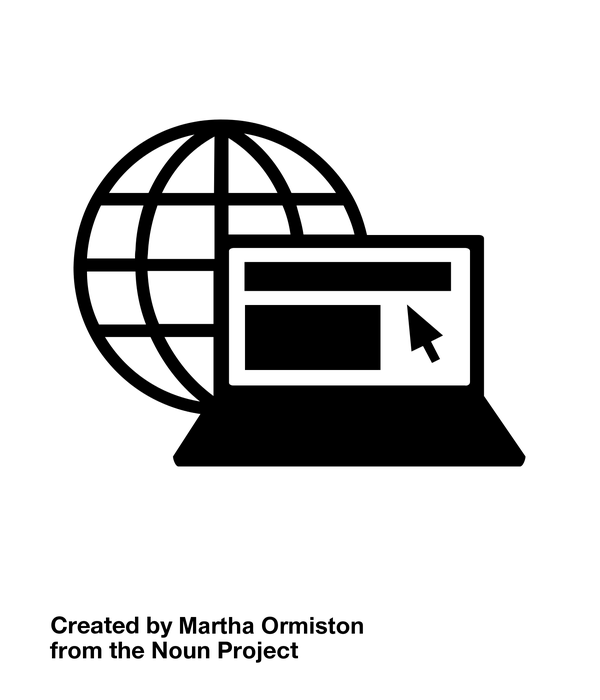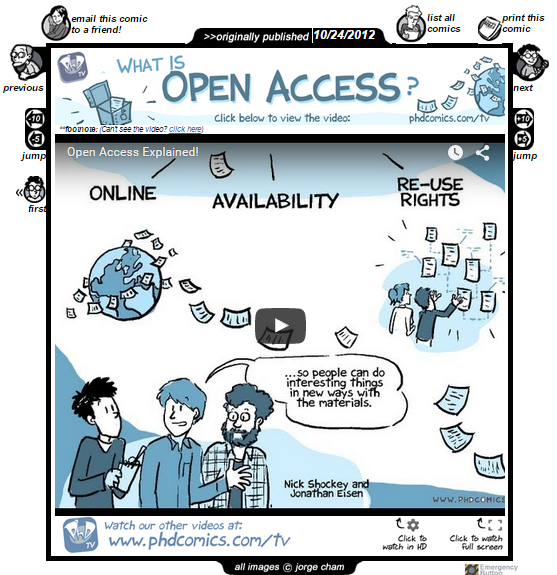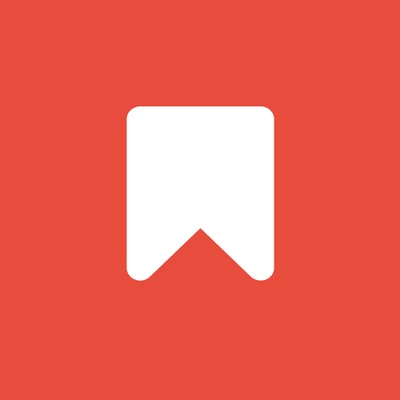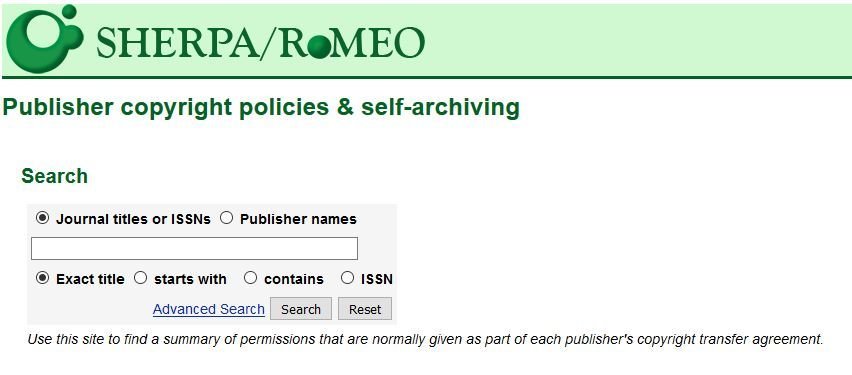Open Access Workshop
EMSA Berlin, September 15 2015
FOSTER
Gwen Franck, FOSTER

contents:
- open access/open science refresh + discussion
- the copyright jungle and a possible fix
- Research in the Open
- Article
- pre-publication
- publish
- post-publication
- hands-on: exercise
- discussion
Open Access refreshhhhh
Summary
- Journal subscription prices are unsustainable for research institutions
- no more TINA: Digitization has changed scientific publishing
- Publishing is not necessarily costless but current system is not fair
- Not only "Free to read" but reuse rights are crucial as well
- Biggest impediments:
- current scientific practices
- misunderstandings about OA

Talking points
- different ways of making your work OA
- depositing/publishing
- preprints/post-prints/published version
- embargoes
- hybrid publishing
- "working in the open"
- free to access/right to reuse

Post-it exercise

What is, in your career, the biggest impediment for Open Access?
| Scientific practice (faculty culture,...) |
| Misunderstanding (different ways to OA,...) |
| Money (APCs, ... |
| Intellectual property scare (licensing, ...) |
| Infrastructure (no repository, journal, ...) |
"The opportunity cost of my #OpenScience was 36 hours + $690"
Research does not happen in an ivory tower...

Screenshot from the game "Monument Valley" by USTWO. (c)USTWO, all rights reserved
I didn't ask permission to use this image. But as it is clearly for educational purposes, I hope USTWO is ok with it. If not, drop me a line and I'll remove it !
Science does not longer happen behind university walls alone



All icons found on The Noun Project




And Civil Society has an
interest as well!





All icons found on The Noun Project







Especially in your field, we can agree that different levels of openness are applicable.
What could be entirely in the open and what not? How would you proceed to make data more open?
Discuss!

- Open Data: 5 star data
- Open Notebook Science
- Software/code sharing
Open Science is about more than access to scientific articles
Exercise!

Do you know the different levels of making your data open? Which methods allow for the most reuse? Which the least?

http://5stardata.info/en/ by Tim Berners-Lee





(A sidenote on the confusing reality of access and re-use rights and a possible solution )
Existing copyright regulation is not always adapted to the reality of research practice in 2015



- multiple authors in different countries
- Unharmonised limitations & exceptions
- data mining
- various Open Access policies
- Wikipedia ...
- social media
- translations
- civil society
- ...


"I am so confused" by Ian Sane on Flickr CC BY 2.0

Accident ! by clement127 found on Flickr CC BY NC ND
Every scientist should be able to conduct research without fearing accidental breaks of copyright

If you make it clear from the start what can be done with your work ...
- access
- attribution
- re-use
- modification
- commercial use
- ...
... others can build upon your work without fear of violating your author rights.





"Some rights reserved"







Two additional legal tools


License chooser

Image by Aston University - licensed under a CC BY 4.0 license
Adding a CC license to your work

Three layers:
- Machine Readable
- Human Readable
- Legal Code





Make sure the license you use allows for the re-use you want!
Citing CC licensed content
a little common sense goes a long way!
- attribution (BY) is obligatory: name of the author and name of the work (if available)
- link to the original source
- mention if the work has been adapted
- state the license under which the material is available, and link to it
- when in doubt: contact the author


Incorrect citation

Photinus pyralis, a species of firefly found in the eastern United States (via wikimedia commons)


Cooper-Hewitt's Collection Database, licensed under CC0 on Github
"In order to reduce any uncertainty about the 'legitimate uses' of this dataset, Cooper-Hewitt has licensed this release under a Creative Commons Zero (CC0) license. This license is the most permissive available and allows for all types of reuse"
You can use and reuse all elements in this dataset without worrying about attribution or other restrictions, as it is in the Public Domain
Keep in mind when licensing your work:
Finding CC licensed content

Pieter Edelman, Flickr, CC BY NC ND https://www.flickr.com/photos/mr-pi/2761538101

Don't forget: CC licenses are a fix for a broken copyright system ...
Exercise!

Can you say, in your own words, what each of this license parts mean?




QUIZ!


Formula cannot be (c), but it could be patented

(c) Disney Corporation, but the fairytale is Public Domain!

"Inauguration Officielle de l'Exposition de Gand et des Floralies par L. L. M. M. le Roi, la Reine et le prince Léopold" (orphan work: photographer unknown)

Text
"Pride and Prejudice" by Jane Austen, on Project Gutenberg (public domain)

(c) Seth Grahame Smith
http://en.wikipedia.org/wiki/File:PrideandPrejudiceandZombiesCover.jpg

"American soldiers watch as the Tricolor flies from the Eiffel Tower again" via Wikimedia
Although France does not have 'Freedom of Panorama', the Eiffel Tower dates from 1889 and is PD. This specific picture is PD as well because: "This work is in the public domain in the United States because it is a work prepared by an officer or employee of the United States Government as part of that person’s official duties under the terms of Title 17, Chapter 1, Section 105 of the US Code"

“The Eiffel Tower, built in 1889, falls within PD
Daytime views from the Eiffel Tower are rights-free.
However, its various illuminations are subject to author’s rights as well as brand rights. Usage of these images is subject to prior request from theSociété d’Exploitation de la Tour Eiffel"

"Elgin Marbles east pediment" by Andrew Dunn on Wikimedia CC BY-SA 2.0
Although the work is PD, the picture can be (c) because of the level of originality

“In accordance with legislation, usage rights for the image of the Atomium would naturally extend to 1st January 2076, in other words, the seventieth anniversary of André Waterkeyn's death" http://www.atomium.be

A phone number is not an original expression

(c) Disney Corporation, but the fairytale is Public Domain!

Original expression (c) Paper Towel Lunch Art
Research in the Open
- Working in the open
- Find open content
- Data management
- Check formal requirements
- funders
- instititution
- Check infrastructure
- journals
- repositories
Working in the Open?
What are the advantages and disadvantages?
Which tools do you use?
Discuss!

Open Science starts before the publishing process!
The sooner you start, the easier it is ...
Where can you find OA content?
- Google (Scholar)
- Journal homepage
- Open Access Button
- OA journals: DOAJ
- Repositories: OpenDOAR
- Directories/Repositories
- PubMed
- ...
- Other?
Citation
- article citation
- data citation
- image citation


Check your funder requirements
ROARMap

Who funds you?
Do they have an OA policy? If so :
- How should OA be obtained?
- Embargo
- Article Processing Charges
- Licensing requirements
- Data management policy?
A lot of information on these can also be found on http://openaire.eu
Notable policies that might influence you:

Your article is ready to be published?
Article
- article contents:
- all authors + contact
- online visibility
- linked to funding
- links to related articles , data
- ORCID
- copyright statement/licensing information
- take care of your metadata

Making it easy for others to cite you ...

Finding an OA journal: DOAJ
Quality assessment:
Text

Text
OA can also be achieved through another route ...
Check all publishers' OA polices : SHERPA/RoMEO
- use a post-print
- embargo
- pay an Open Access fee
Even non-OA publishers allow OA through depositing in a repository, on certain conditions:
Sidenote:
- Open Access does not equal high APCs
- OpenAIRE Gold pilot

Finding a repository: OpenDOAR

In summary: different kinds of OA
- OA Journals:
- with or without APC
- check if you can reclaim APC
- Hybrid journals
- beware! double dip!
- Classic journals
- check Sherpa Romeo and deposit your post print
Sidenote : take care of your data
Exercise!

These are the 60 most influential journals according to JCR.
Pick some titles you know, and try to identify their OA policy.

Post publication:
How do you disseminate your research after publication?
- Impactstory
- altmetrics
- OA citation advantage
- Link and disseminate:
Final Exercise

| Article # | Institution/Funder OA/OD policy/instructions | Publisher OA/OD policy/instructions | Cost? | License/(c) provisions |
|---|---|---|---|---|
| 1 | ||||
| 2 | ||||
| 3 | ||||
| 4 | ||||
| 5 | ||||
| 6 | ||||
| 7 | ||||
| 8 | ||||
| 9 | ||||
| 10 | ||||
| 11 | ||||
| 12 | ||||
| 13 | ||||
| 14 |
"In 5, 10, 15 years, I don’t want to be talking to people about open science: I want this to just be science."
https://thewinnower.com/papers/2301-my-open-science-story

"Open Means Never Having to Say You're Sorry" by Alan Levine on Flickr CC BY-SA
Resources
- FOSTER
- OpenAIRE
- PASTEUR4OA
- DCC
- Creative Commons
- EIFL
- Wikipedia
- Open Access Directory
- Your institutional library/repository
- @g_fra
- gwen.franck@eifl.net
"Open Access Workshop" by Gwen Franck is licensed under a Creative Commons Attribution 4.0 International License, except otherwise noted.












